Why voice recordings work for young adolescents
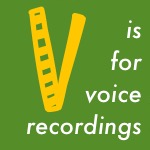 As students use technology to explore and capture projects that show both their emerging proficiency with skills and snapshots of who they have been, are and may become, tools that allow students to add their own human voice to multimedia can be invaluable in the discovery and showcasing process.
As students use technology to explore and capture projects that show both their emerging proficiency with skills and snapshots of who they have been, are and may become, tools that allow students to add their own human voice to multimedia can be invaluable in the discovery and showcasing process.
Here’s why voice recordings work for young adolescents and 3 tools we like for creating them.
Audio tools lower the social anxiety of being recorded
With students going through such a tumultuous time of growth and discovery of identity, it’s easy for us to ask them to make and appear in videos, but in a lot of cases, students have a complicated relationship with their physical appearance. Some may even start the day feeling like a movie star but be ready to crawl under a desk by the end of second period. Some may skip the movie star feeling and head straight for the desk. So being able to document their learning without having to worry about, agonize over or be confronted by their physical appearance can allow some students to focus on the story they want to tell.
Creating audio stories increases storytelling options
Recording stories is fun, and having additional options for how to tell your story makes it even more powerful. Giving students a whole range of tools that they can choose from increases their power as learners, and allows them to tell you more about who they are and how they want to learn.
Here’s 3 audio recording tools we like:
1. Audioboom: (formerly AudioBoo)
AudioBoom is a free mobile app that creates short recordings that can be shared via the AudioBoom platform. They also have a rich library of resources for educators.
Mr Hagedorn’s 5th grade class in Rockport, Illinois, have created their own online radio station with AudioBoom, where they broadcast daily.
2. Vocaroo:
Vocaroo is browser-based, has a deliberately short, limited time, and does not require students to create an account. The resulting recording can be saved in a variety of audio formats, emailed to yourself, turned into a QR code, embedded in a website or — bliss of bliss — simply deleted from the earth so you can try again. Great for rehearsing recordings and building up student confidence.
3. Adobe Voice
A new find for us is Adobe Voice, a free iOS app that allows you to assemble slideshows and then record your own narration to go with them. It’s a little different in that it specifically ties voice to visual data and also provides a rich structure for scaffolding the telling of different types of stories.
When you create a new project, Voice offers you a range of templates to choose from, or you can create your own:
Once you choose a storytelling template, you can add photos from the camera roll, text subtitles and background music before recording your narration:
This Adobe Voice was created by students to illustrate the differences between northern and southern geography:
[youtube https://www.youtube.com/watch?v=qdJIXtbZVA0]
And educator Chelsea Baum made this Adobe Voice to explain how her students used Adobe Voice to write additional soliloquys for Shakespeare’s Romeo and Juliet:
[youtube https://www.youtube.com/watch?v=guGCavdeZuU]
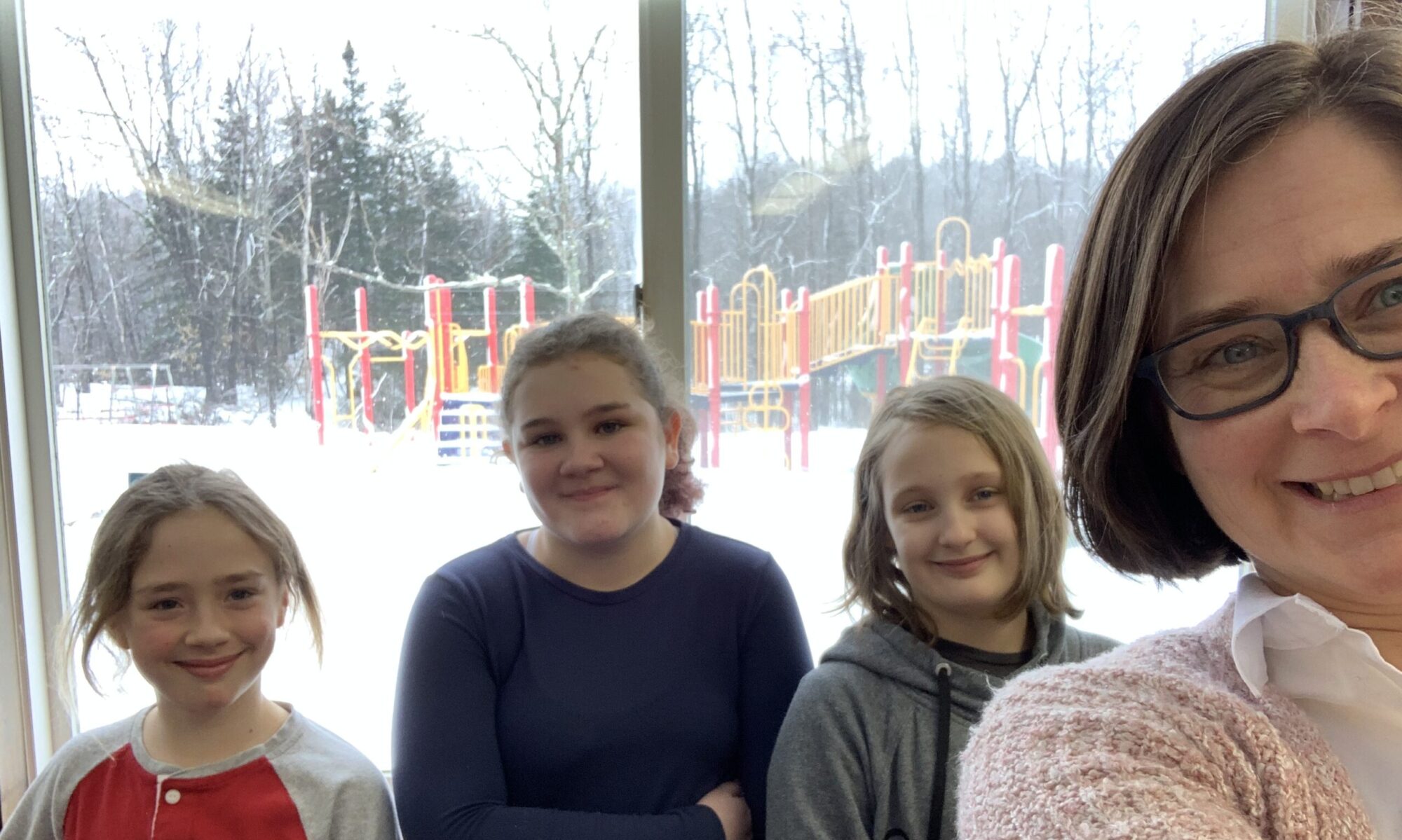

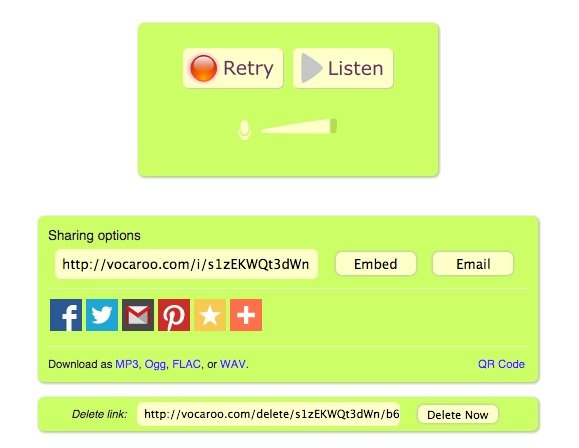
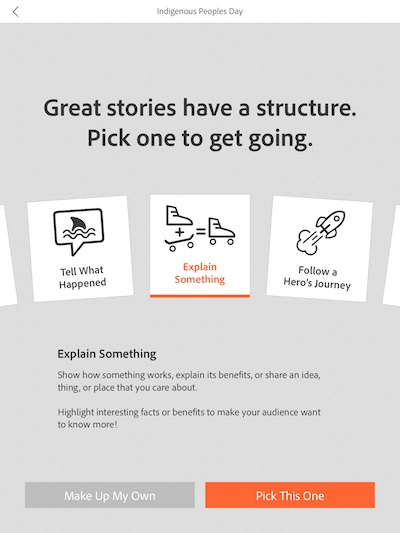
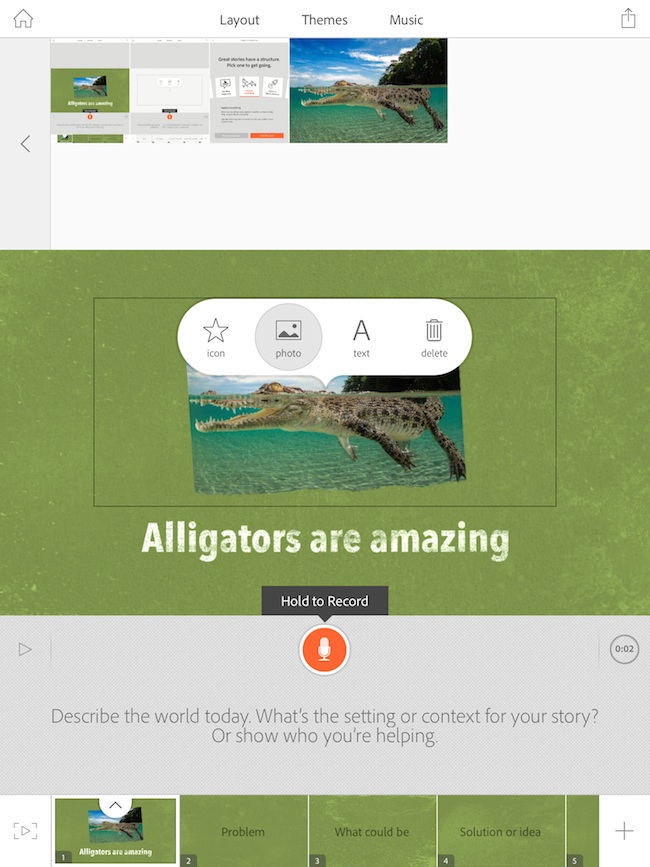
Ways voice recordings can work for young adolescents, featuring @AdobeVoice http://t.co/1wI1cK4crv http://t.co/p01LcQjWzP
V is for Voice Recordings http://t.co/hRnJGymkas via @innovativeEd
ABCs of EdTech: V is for Voice Recordings http://t.co/KmYrCoJi4f
RT @innovativeEd: Ways voice recordings can work for young adolescents, featuring @AdobeVoice http://t.co/1wI1cK4crv http://t.co/p01LcQjWzP
#FACEandS #Audio #Tools #Food4Thought – V is for Voice Recordings – Innovation: Education http://t.co/xBfxS8ejBq